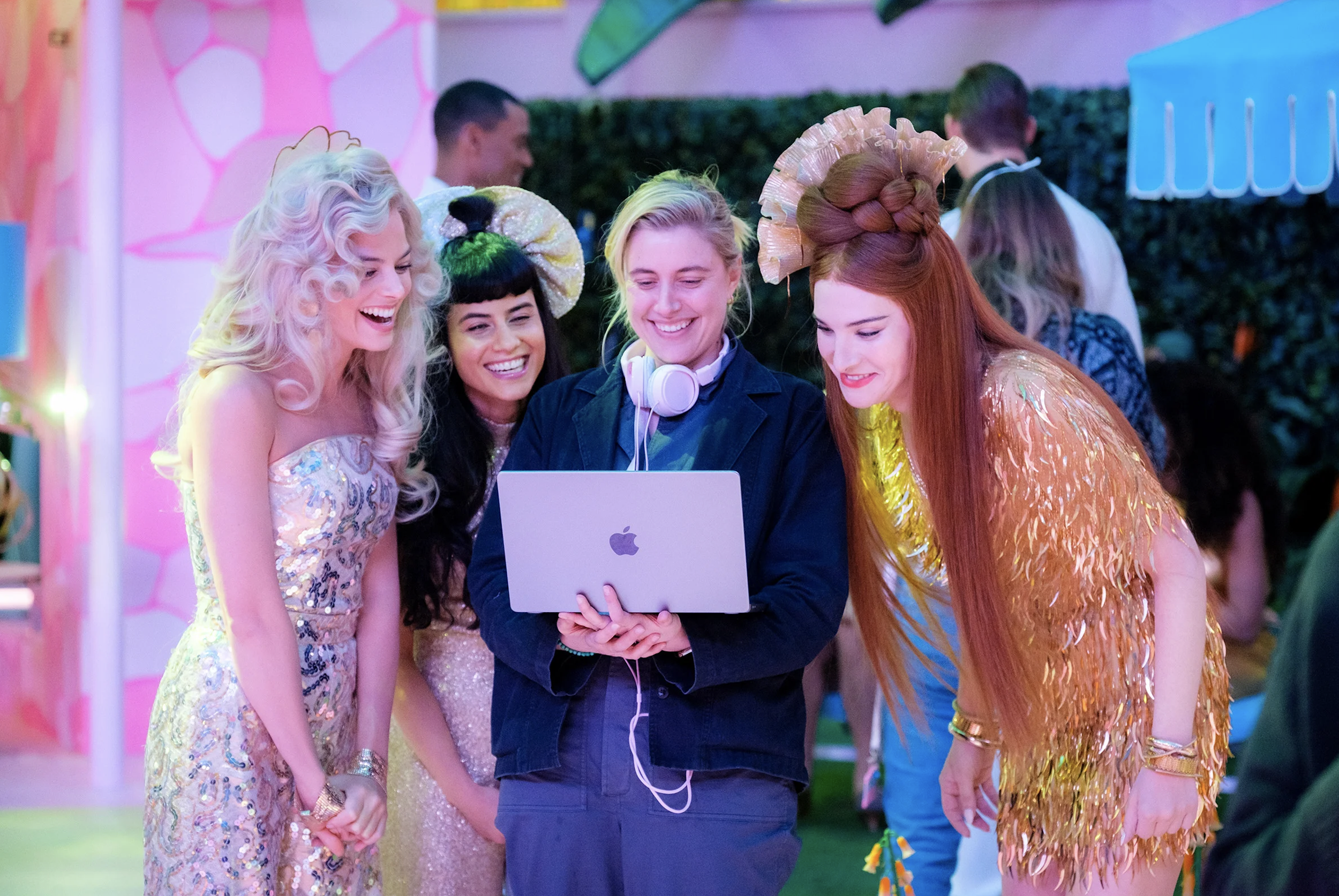Is Barbie a feminist movie?
Barbie made a comeback this summer with its movie release on Friday, July 21, creating a cultural moment called 'barbiecore.' The @feminist team investigated the question: Is the Barbie movie a feminist film?
Our answer: It’s complicated.
Before continuing to read, please note that our review of the film does not cross the picket lines of the SAG AFTRA & WGA strike, and there will be spoilers of the movie’s plot in our review. 🚨
A scene from the Barbie movie featuring co-stars Margot Robbie who plays “Stereotypical Barbie” and Ryan Gosling as “Ken” 📸 Getty Images
Barbie, the toy, has a complex history with feminism. While some say Barbie’s many careers are inspiring to their young children, others quickly decline, saying Barbie’s small waist and large breasts create impossible beauty standards for their kids. As the trailer promotes, 'If you love Barbie, this movie is for you. If you hate Barbie, this movie is for you.' Mattel has yet to use the word 'feminist' in the same sentence as Barbie.
In the opening scene of the movie barbie creator, Ruth Handler build’s “Stereotypical Barbie,” Margot Robbie’s character. The character is reminiscent of the first Barbie created in 1959.
Barbie was invented by Mattel co-founder Ruth Handler in 1959 and was marketed as a wholesome all-American doll intended to empower young girls. The doll initially came with a briefcase and office supplies, with multiple outfits to show she was an independent woman in the workforce. At the time, this would have been considered a feminist-forward message. However, as time went on, Barbie became an anti-feminist symbol as the doll leaned into gender stereotypes in femininity, providing an unhealthy association with beauty standards for young people.
While Mattel has never labeled Barbie as feminist, it has adapted to present-day themes of intersectionality in feminism. In 2016, Mattel introduced new characters into the Barbie-sphere, offering more representation of diverse characters and body positivity.
Margot Robbie, Ana Cruz Kayne, Director Greta Gerwig, and Hari Nef on set in Barbie world, a matriarchy where all Barbie’s are equal. 📸 Jaap Buitendijk
Today, Barbie is more relevant than ever, on track to potentially score the biggest domestic opening for a solo female director in history. Directed by Greta Gerwig, known for creating women’s empowerment films such as Lady Bird and Little Women, we know that gender was part of the storytelling process.
Issa Rae, Kate McKinnon, Alexandra Shipp, Margot Robbie, and Hari Nef, photographed in Los Angeles on June 8, all star as Barbie. 📸 by Carlota Guerrero for TIME
On a surface level, Barbie does lean into queer representation, identity, and diversity. Transgender actress Hari Nef and lesbian actress Kate McKinnon co-star, offering queer representation, while Issa Rae stars as 'President Barbie.' Different races and professions are portrayed, but most Barbies are thin and lack accents, appearing virtually the same. There wasn't an exploration of different experiences between women of diverse backgrounds, nor was there adequate queer representation in the character development.
Hari Nef, one of the co-stars, wrote to Gerwig and Robbie, asking to play one of the Barbies in the film. As a trans woman, she has mixed feelings about the term "doll" in queer culture, finding it both aspirational and oppressive due to its strict standards rooted in patriarchy, yet acknowledging its promise of liberation, safety, and belonging. She points out that it makes for a 'juicy' performance. The fact that this perspective was shared in the filmmaking process is a point for feminism!
A screenshot of a text message between @feminist teammates reads, “It’s politically charged and seemed well-recieved by the people around me. I left with a good feeling. I think it falls under white feminism but has a long way to go to be considered intersectional.”
This is what the @feminist team had to say: A pro-feminist narrative that we appreciated, but the film nods to its history of creating impossible beauty standards. In the movie, Barbie's initial fear is cellulite, and she ends up wanting to be a real girl in the world, overcoming the pursuit of perfection.
However, two major cons made the film not fit our perspective of intersectional feminism: The narrative stayed too close to the gender binary and did not show alternative perspectives to gender and the gender construct. Additionally, the film did not offer adequate representation of queerness or queer identity in the storyline.
The @feminist community on Threads weighed in on the topic
We were curious what our community on Threads had to say and posed the question. The general consensus: ‘Yes it is a feminist film,’ it does a good job of starting the conversation about what the patriarchy is and how it works, especially for the male audience who may not fully understand. However, it lacks the depth to be a truly intersectional feminist film.
While the purpose of the film is to entertain, it does that! But ultimately, we found the narrative stayed too close to the gender binary. As intersectional feminists, we were hoping all the characters would be liberated in the end, and unfortunately, that wasn’t the case.
Have you seen the movie? What do you think? Tell us your take on threads!








